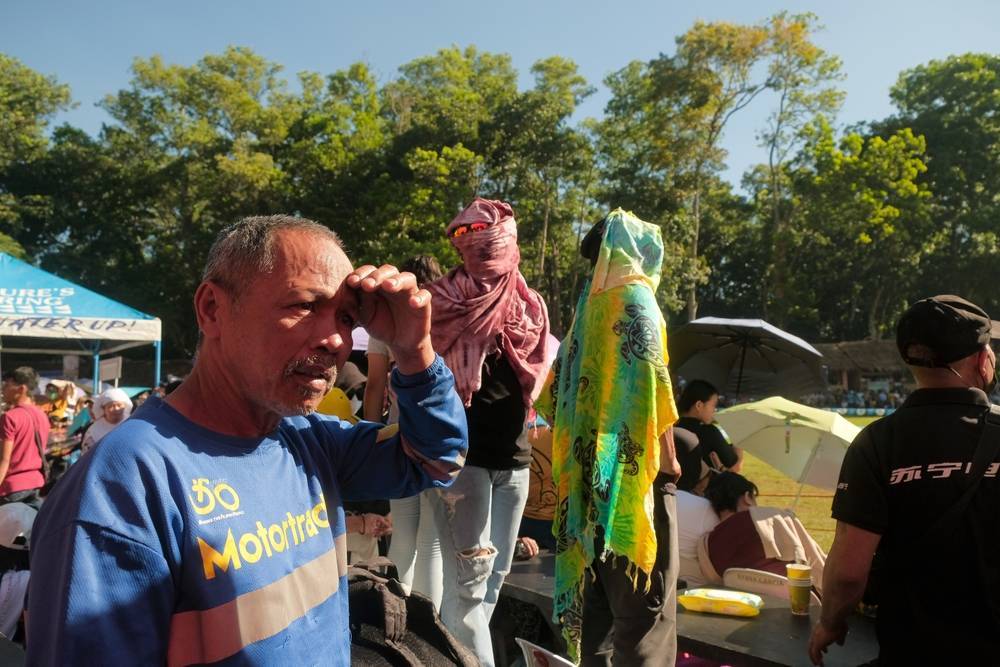Temperatures continue to soar in Southeast Asia, as metropolitan cities like Bangkok, Manila and Singapore reach record temperature highs.
The heatwave sweeping Southeast Asia is resulting in serious cases of heat injuries, and in this article, we speak with locals and medical professionals on how to cope.
Understanding Heat Injuries and Their Treatment
Dr Rizal Michael R. Abello, a General Practitioner and Occupational Health Physician at San Beda University College of Medicine highlights
In both scenarios (Heath Exhaustion and Heat Stroke), patients would have hyperthermia, headache, tachycardia, nausea, and vomiting. However, patients with the latter would present with a temperature above 40C, signs of organ damage like acute liver injury or acute kidney injury and would have altered mental status and other CNS dysfunction.
Treatment begins with assessment and cooling. HE patients are advised to rest in a cool environment and stay hydrated. If their symptoms don’t resolve within 20-30 minutes, they are treated as HS. Rapid cooling techniques are employed for HS patients, including misting systems, ice-water immersions, and ice packs. They should also be transported to a medical facility for further management.
Heat Exhaustion Symptoms:
- Elevated body temperature
- Headache
- Rapid heart rate (tachycardia)
- Nausea
- Vomiting
Heat Stroke Symptoms:
- Very high body temperature (above 40°C)
- Signs of organ damage, such as acute liver injury or acute kidney injury
- Altered mental status and other central nervous system dysfunction
- Persistent heat exhaustion symptoms that do not resolve after cooling and hydration measures
- Severe headache
Preventive Measures to Beat the Heat
Dr Abello strongly recommends patient education for heat injury prevention. Familiarity with Heat exhaustion and Heat Stroke symptoms, staying hydrated, avoiding errands during the hottest part of the day, wearing appropriate clothing, and maintaining a cool home environment are crucial.
Innovative Solutions in Singapore
In July 2022, over 200 construction workers in Yishun, Singapore, were provided with isotonic ice slurries to combat heat strain and exhaustion. This initiative lowered their core temperatures, reducing their risk of heat strain. The workers reported feeling cooler, better hydrated, and more energetic.
The Workplace Safety and Health Institute leads this creative solution, actively exploring several interventions to assist vulnerable groups such as construction workers, outdoor cleaners, seniors, and factory workers in unventilated environments.
The Heat’s Impact on Daily Life
People on the streets of Manila feel the impact of the rising temperatures. A 25-year-old resident reports using air conditioning more frequently and limiting outdoor activities due to the extreme heat, which leads to quick exhaustion. Also, a senior citizen notes that everything in the house feels warmer to the touch and that the heat leads to easy exhaustion, increased blood pressure, and occasional headaches.
“One can feel the heat. You perspire a lot even at rest. I change my clothes every so often as I am sweating a lot.”
Conclusion
As Asia grapples with rising temperatures, it’s crucial to understand the health risks associated with heat injuries and take preventive measures. Additionally, innovation and adaptation, like Singapore’s isotonic ice slurry initiative, can offer practical solutions. Staying alert to our bodies’ responses to the heat, like our Manila citizens, is also essential. Therefore, as the heat wave intensifies, remember to stay cool, stay hydrated, and stay safe.

